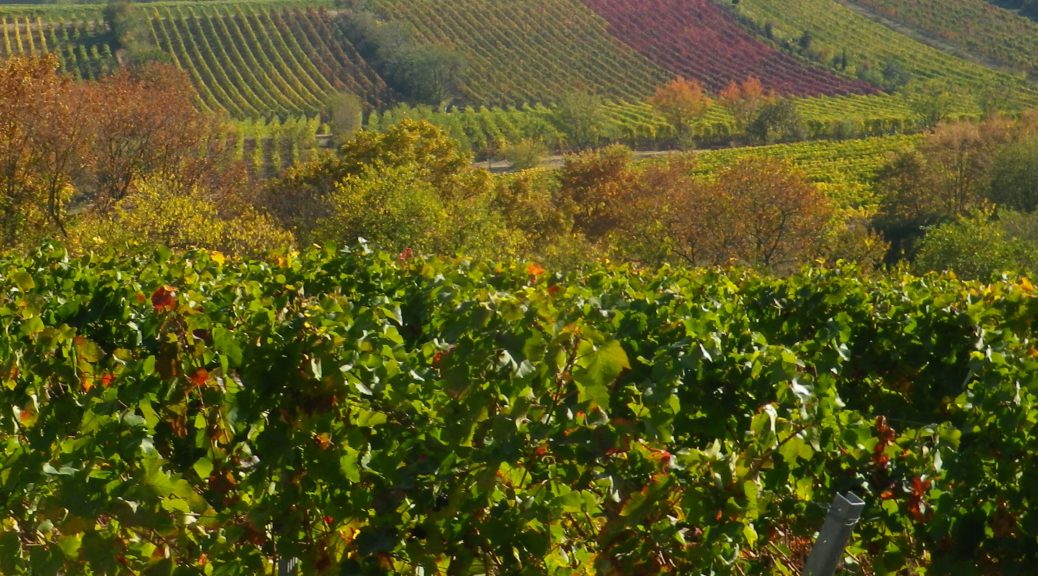What I Learned
Germany’s Pfalz wine region is divided into two parts, the northern district of Mittelhaardt/Deutsche Weinstrasse, and the Suedliche Weinstrasse which is located south of Neustadt an der Weinstrasse. This entire region produces both red and white wines, with white wines making up approximately two-thirds of the overall annual production.
The Mittelhaardt/Deutsche Weinstrasse district runs along the Haardt mountains, facing east on gentle slopes in the optimal rain and wind shadow formed by the mountains covered by the majestic trees of the Pfaelzer Wald forest. This district, which begins in Bockenheim and continues to south of Neustadt, is in one of the warmest and sunniest regions of Germany. It contains towns and villages famous for their wines, as well as their lively wine festivals. Bad Duerkheim, with its Wurstmarkt in September, Neustadt with its Weinlese festival, in October, are two of the most famous wine festivals in Germany.
In part of the northern section of the district, there is a spur of limestone. These areas contain some of the most famous vineyard plots. But from Wachenheim to Gimmeldingen, just north of Neustadt, most vines grow on the colorful red sandstone, so typical of the Pfalz. Deidesheim has its famous Paradiesgarten and Hohenmorgen, while nearby Forst has its Ungeheuer, Jesuiten and Pechstein plots. Koenigsbach has the Idig plot, south of the Oelberg, which you see from the trail, and Gimmeldingen has its Kapellenberg. All have history and traditions that make the wines from the Mittelhaardt especially enjoyable!
What I Tasted
2018 Riesling, Koenigsbacher Idig, Deutscher Praedikatswein Spaetlese, Trocken, Weinland Koenigsbach Neustadt: A dry white wine with pale gold color; a slight peach nose, with peach and sour citrus flavors; medium minus acidity
2017 Chardonnay, Edition, Deutscher Praedikatswein Spaetlese, Trocken, Weinland Koenigsbach Neustadt: A dry white wine with pale gold color; almond and honey nose, with slight apple and honey flavors; medium acidity
2017 Grauburgunder, Deidesheimer Hofstueck, Deutscher Praedikatswein, Spaetlese, Trocken, Weinland Koenigsbach Neustadt: A dry white wine with pale gold color; a slight floral honey nose, with slight fruity flavors; medium acidity
2017 Chardonnay, Deutscher Praedikatswein, Spaetlese, Trocken, Weinland Koenigsbach Neustadt: A dry white wine with medium gold color; nose of spice and buttered popcorn, with vanilla, buttered toast and peach flavors; velvety mouthfeel, medium plus acidity, with a medium-long finish.
2015 Riesling, Ungeheuer, Deutscher Praedikatswein, Spaetlese, Trocken; Weingut Lucashof (Forst an der Weinstrasse): A dry white wine with medium minus gold color; mineral nose, with turpentine, slight resin, and vanilla spice flavor; medium minus acidity.
2015 Riesling, Ruppertsberger Reiterpfad, Trocken, Deutscher wein, Ruppertsberger Weinkeller Hoehburg: A dry white wine with medium gold color; a slight mineral nose, with mineral and green apple flavors, overlaid by a slight hint of turpentine; medium plus acidity, with a smooth, tart finish.
2015 Riesling, Forster Stift, Kabinett, Trocken, Deutscher Praedikatswein; Weingut Lucashof (Forst an der Weinstrasse): A dry white wine with light plus gold color; floral and green apple nose; floral, peach, green apple flavor; mildly tart finish coming through layers of luscious flavors; medium acidity.
2015 Riesling, Pechstein, Deutscher Praedikatswein, Kabinett, Trocken; Weingut Lucashof (Forst an der Weinstrasse): A dry white wine with medium minus gold color; mineral nose, with red grapefruit and peach flavors, with a hint of minerality; medium acidity.
